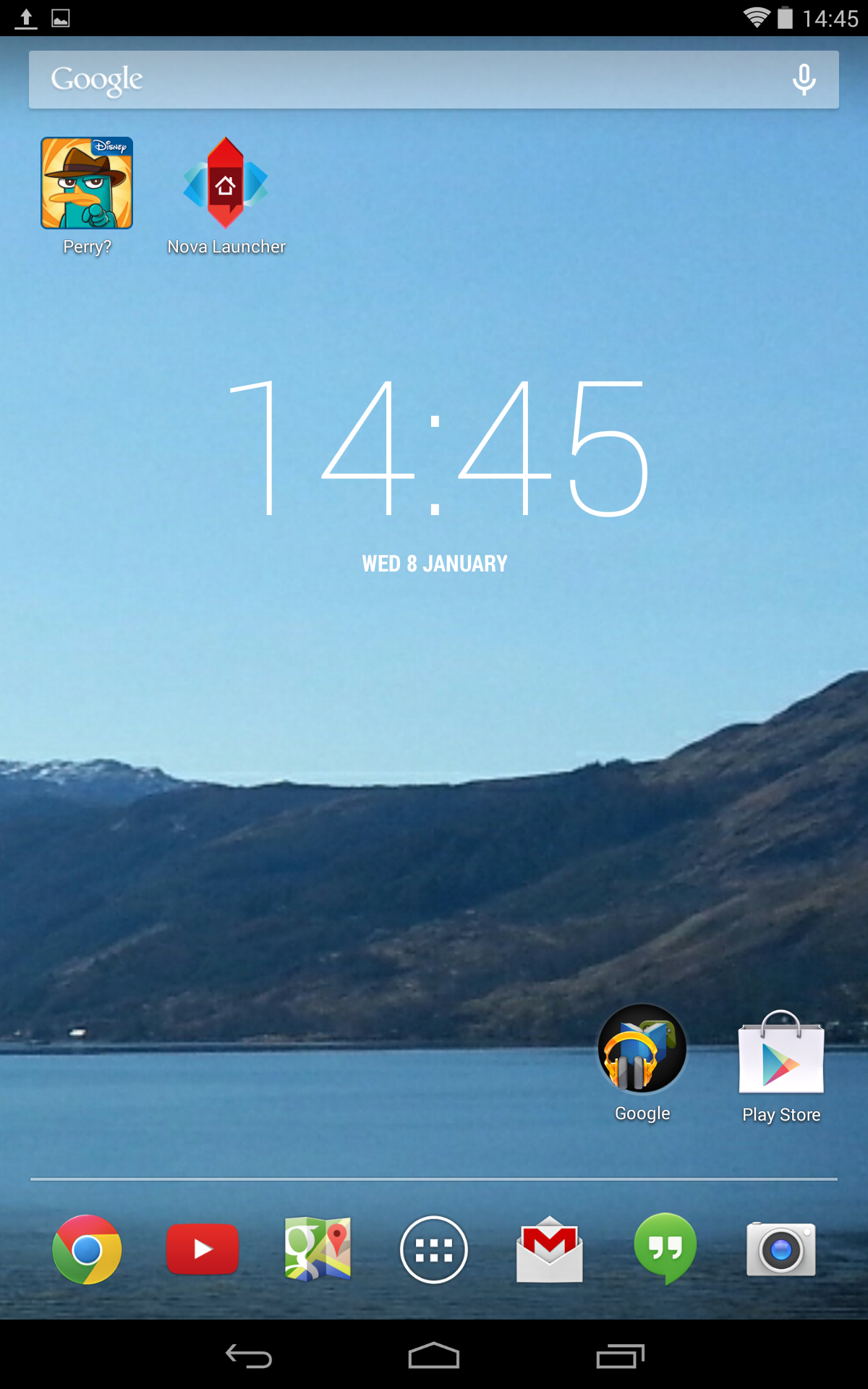Why you can trust TechRadar
If you're looking for pre-done customisation out of the box, you're looking in the wrong place. Nexus devices are intended to let you see Android in its rawest form. It's a way of witnessing Google's vision. And that's exactly what you're getting with the Nexus 7: pure, unmodified, untinkered-with Android 4.4.
That means homescreens - five of them. But of course, you can instantly replace them with your own launchers and tweaks. Lots of people go for custom launchers, which provide a safer, less technical way of modifying the look of a device without having to go down the rooting and custom ROM line.
Ultimately, what you're getting on the surface of the Nexus 7 is something that looks pretty much identical to previous Jelly Bean versions, give or take the odd tweak.

Widgets are prevalent, as they have been since day one of the Android OS, making them a key selling point that iOS users can only hanker after. And nowadays, they're not just on your homescreen, but your lock screen too.
It's ideal for the ultra-lazy - you don't even have to swipe to unlock your screen when you want to perform a task. It equates to dozens fewer finger swipes a day for heavy users. No wonder we're turning into a nation of fatties.
(As a side note, remember, Nexus devices get updated first. So when that OTA notification comes, it's just a matter of hitting 'Install' to stay on top of the pack.)
Breaking with the look of Jelly Bean (and Ice Cream Sandwich before it), the colour scheme is much lighter in KitKat.
Sign up for breaking news, reviews, opinion, top tech deals, and more.
All those Tron-looking blues have been swept away, and replaced by a clean and crisp white and the odd touch of grey. It gives everything a lighter, more elegant feel.
Looks aside, it's easy to navigate and intuitive enough. First-time users may find the menus a little overwhelming, but seasoned tinkerers will be at home.

This is a world away from the extreme handholding of Apple's models, as any Android fan will attest.
In fact, most of the changes to the OS are under the hood. There are some slight differences, like the fact you can now have user profiles, but it's other things that make a difference. Things like support for Bluetooth 4.0 and OpenGL ES 3.0, plus better DRM coding.
Google's invested some serious time and effort into providing a usable keyboard in its interface, something which first broke cover in the Nexus 4 in late 2012.
It's a great effort, albeit hardly an original idea. It apes the functionality I first grew to love with the Swype keyboard, which was later adopted by Swiftkey.
Indeed, it's almost on a par with the latter in terms of functionality and reliability, though I still prefer Swiftkey for two reasons.

Firstly, the fact you can alter the keyboard's theme (I'm fickle), and secondly, because flicking between letters and numbers is easier on Swiftkey than Google Keyboard. But there's really not that much in it.
As for the performance, boy does this baby fly. Last time, I got excited by Project Butter - a bit of Android code that would revolutionise our lives by making everything run smoother and quicker.
But it wasn't as great as it sounded. Anyone with a creaking original Nexus 7 will tell you that Project Butter can't work miracles.
The optimisations of Android 4.4, and Project Svelte, are a different matter altogether. Mixed in with that 1.5GHz quad-core Krait CPU, Qualcomm Snapdragon S4 Pro chipset and 2GB of RAM, they mean there is little you can do to make the new Nexus 7 stall.
Games and apps load in a flash and you can swipe between screens, littered with widgets, and not encounter the slightest stutter.
Multi-tasking is handled with ease - it's all done via one of the three on-screen soft buttons you'll find throughout the OS. I had more than 20 apps open at the same time and encountered no problems whatsoever. The Nexus 7 is hard to beat in this respect.
